As the eight-year tenure of the mayor of London draws to a close, many Londoners have mixed feelings about the changes he has wrought on their city
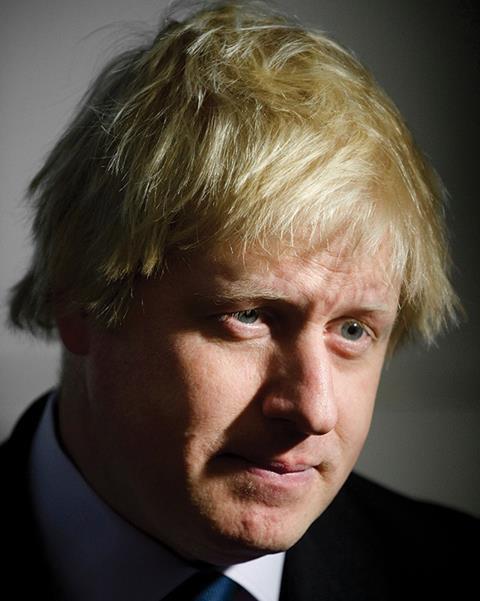
Boris Johnson may be the most colourful and charismatic British politician of the day – but as he leaves his eight-year tenure as mayor of London next month, what has he actually achieved for the capital? And within the specific sphere of architecture and urban development, what has been the nature of his influence?
In seeking to answer these questions and assess Johnson’s legacy on the built environment, the first thing to acknowledge is that the powers of London’s mayor are severely limited, certainly in comparison to other world cities. Mexico City’s former mayor legalised abortion and introduced gay marriage. In Berlin the mayor can block federal legislation, the equivalent of Johnson refusing to implement George Osborne’s recent sugar tax within the capital.
And in New York, arguably the world’s most powerful mayor has a gigantic budget of £45bn at his disposal (compared with Johnson’s £17bn) and has direct executive control over a sprawling range of municipal services ranging from police to education. (Oddly New York’s mayor has no influence over transport, although this is probably more a symptom of the ambivalent relationship US society maintains with the concept of public transport.)
London’s mayor on the other hand has influence over a relatively limited portfolio, with the Greater London Authority (GLA) itself conceding that “the mayor has few direct service and delivery powers”. Moreover, the mayor must exercise his power in conjunction with London’s 33 boroughs, a fractious arrangement in which a debilitating combination of bureaucratic intransigence and feudal self-interest often constricts the realisation of strategic, London-wide policy.
However, limited as they are, the mayor’s powers still have a significant impact on the city. The 1999 GLA act identifies those powers as encompassing seven key functions, of which the following four have a direct influence on the capital’s built environment: strategic planning and environment, housing, transport and economic development. (The remaining three are fire and emergency planning, the police and the power to establish development corporations).
The four built-environment-related powers can in turn can be further dissected into the six key areas featured here. The following analysis of each one seeks to answer the key question of whether Johnson’s tenure has left London looking, feeling and working better or worse than it did at the start of his mayoralty in 2008.
Tall buildings
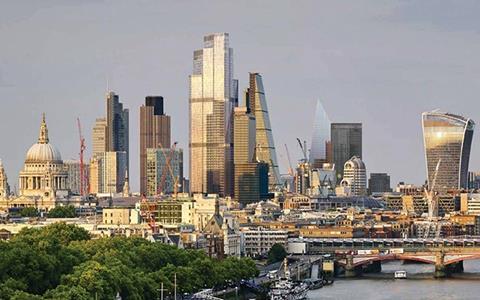
Page four of Boris Johnson’s first mayoral election manifesto published in 2008 stated the following: “Well-designed tall buildings should play a part in London’s development, but they must not overshadow existing landmarks.” This came on the back of an election campaign in which Johnson had lambasted his predecessor Ken Livingstone’s unfettered enthusiasm for high-rises and himself promised to halt the proliferation of “drab, featureless and phallocratic” towers in the capital and “redraw the planned skyline as a matter of priority”. He spoke earnestly of his “embarrassment” that London’s “precious skyline” was under threat and mused over “whether we have learned anything from the experience of the past 50 years”.
Fast-forward to eight years later and it seems that we – and he – have not, with a staggering 436 towers now in various stages of construction or permission across the capital (see above). Throughout his mayoralty, Livingstone, whose enthusiasm for tall buildings now appears a mild affectation in comparison, gave permission to only 27. Even with the knowledge that Johnson’s political reputation has always been more aligned to expediency than consistency, as his recent European manoeuvres perhaps demonstrate, his titanic U-turn on tall buildings ranks as arguably the most outrageous policy reversal of his mayoralty.
London has always had a contentious relationship with tall buildings but Johnson’s policy, or lack of it, has transformed the issue into one of the most viscerally divisive within London’s built environment sphere. Supporters, among which the mayor’s planning deputy Eddie Lister is by far the most vociferous, claim that tall buildings are essential for London’s economic vibrancy and housing supply. Opponents, of which there is a burgeoning band, decry the fact that the vast majority of consented high-rises provide luxury accommodation squarely aimed at foreign investors and that the city’s unique urban character is being desecrated in the process.
It is within neither the mayor’s role nor remit to play ideological referee in this dispute, especially as he has aligned himself so firmly to a particular camp. But it is his responsibility to articulate clear and definitive policy criteria within which the location and design of tall buildings can be proposed and then assessed against a strategic London-wide framework. His consistent reluctance to do so and his willingness instead to feed the reckless and opportunistic high-rise scrum now taking place indiscriminately across the capital has done immeasurable harm to London and easily ranks as one of the biggest policy failures of his mayoralty.
Public space
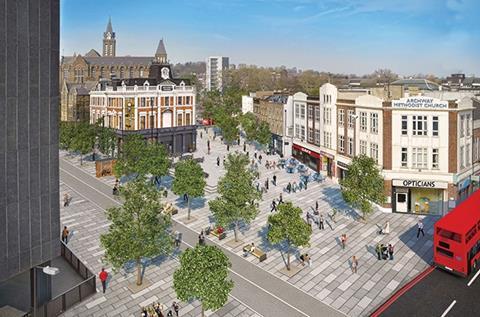
When Johnson decided to bow to pressure from the car lobby and cancel redevelopment plans for Parliament Square when his mayoralty was in its infancy, many feared that London’s public spaces and public realm were poised to enter an Orwellian era of renewed political oppression. This was held in marked contrast to Livingstone’s lauded 100 Public Spaces Programme which, while pitifully low on delivery, at least had the vision and foresight to prioritise the active improvement of London’s public realm and was invested in the same spirit that helped drive the successful 2003 part-pedestrianisation of Trafalgar Square. While the Parliament Square decision endures as one of Johnson’s most punitive, over the past eight years those fearing a new nadir for London’s public spaces might well have been pleasantly surprised.
In one sense, Johnson was fortunate to have his mayoralty coincide with the 2012 Olympics and Diamond Jubilee, historic events that prompted an unprecedented effort to smarten up the capital’s public realm. Consequently, while certainly not directly responsible for projects like Exhibition Road, Jubilee Gardens and King’s Cross, Granary and Leicester Squares, they remain indicative of a pattern of improvement that is indelibly threaded through Johnson’s years in office.
But while Johnson’s mayoralty has lacked headline public space projects like the Trafalgar Square redevelopment, it has been characterised by an equally worthwhile overhaul of less prominent public spaces. The redesign of key junctions and gyratories such as Archway (pictured), Highbury Corner, Hammersmith, King’s Cross, Vauxhall, Waterloo and Old Street roundabout, amounts to the biggest transformation of London’s surface infrastructure since the 1960s.
All are part of the massive £4bn Roads Modernisation Plan which, despite its dry title, represents a heroic attempt to promote a more careful and urban design-orientated redistribution of priority away from the car towards the pedestrian. With its accompanying guidelines aimed at establishing detailed, codified visual and design standards across the public realm, the plan exhibits near-Victorian levels of civic ambition and over the coming decades could well prove to be Johnson’s greatest metropolitan legacy.
However, an unfortunate feature of his mayoralty has been a marked acceleration in the corporate molestation of the Thames, whether in the form of the wall of luxury skyscrapers congregating along its shores or the privatised profiteering from public space evident in his doomed pre-Olympic London River Park and his regretfully un-doomed Garden Bridge. Johnson’s impact on London’s public space is therefore characterised by two perplexing extremes: the visionary enlightenment of a comprehensive reassessment and rebalancing of public space allocation across the city; and the enabling of vested interests to the detriment of the wider public realm.
Planning
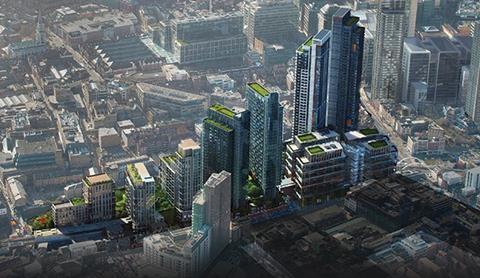
One of the few areas where the mayor can exert genuine executive power is planning. Proposals over a certain size automatically trigger GLA scrutiny and even more intrusively, the 1999 GLA act gives the mayor the power to call in schemes of “strategic” importance to London and override the local planning department if necessary in order to refuse or grant permission. This is a power only previously enjoyed by the secretary of state.
These functions were awarded to enable the mayor to free planning deadlocks and ensure that local, partisan interests do not overwhelm the strategic interests of London as a whole. But within a tortuous bureaucratic hierarchy already primed for friction between the mayor and the boroughs, in practice the powers have led to accusations of anti-democratic interference and have been pilloried by critics as a hypocritical subversion of central government’s previous championing of localism.
Accordingly, one of the most consistent and damaging accusations thrown at the mayor during his time in office has been his alleged bias towards developers. This has been principally, though not exclusively, based on the incontrovertible statistic that of the 14 schemes the mayor has called in, 13 have been decided in favour of the developer.
The 14th proposal, the controversial Bishopsgate Goodsyard redevelopment (visualised above in an image created by objectors), will be decided on Monday and is likely to be Johnson’s last. Like the 13th call-in at Norton Folgate next door (now subject to judicial review), it encapsulates the planning schism that has widened during Johnson’s tenure, a corporately envisaged high-rise scheme vociferously opposed by local residents and even the local mayor, who view the development as a toxic affront to the historic, low-rise character of the neighbourhood.
Unsurprisingly the GLA refutes the significance of the call-in statistic, pointing out that Johnson has only called in 14 of the 2,300 planning applications referred to the GLA since 2008. However, this defence neatly ignores the fact that the GLA act specifically reserves the call-in powers only for those schemes of “strategic” importance anyway.
Away from Johnson’s controversial implementation of his determination powers, his strategic planning initiatives have been defined by remarkable scale and ambition as well as significant injections of private and often foreign finance. Two landmark projects summarise this mindset: his plans for thousands of jobs and homes on the Royal Docks and the controversial Estuary Airport proposals. Both rely on significant amounts of overseas investment and represent a heroic attempt to recapture the pioneering spirt of Victorian expansionism. But both are dogged by grave questions of feasibility.
Accordingly, with the Royal Docks currently unrealised and central government’s resolute rejection of his airport proposals, Johnson’s lasting planning legacy on London is one of increasingly polarised conflict.
Housing
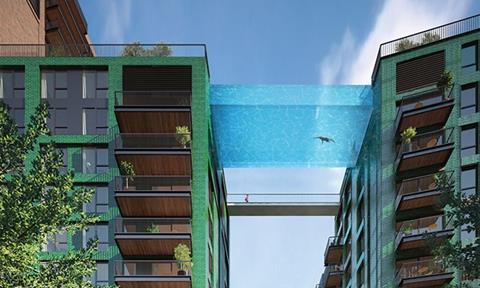
Housing has been identified as Londoners’ number one concern for the next mayor and it is easy to see why. The housing shortage felt across the country is at its most acute in London and with London’s population set to rise by several millions in the coming decades, it is a problem only likely to get worse. On top of its booming population London then has the additional constraint of a property market enjoying unprecedented buoyancy where house prices have increased by up to 500% in nominal terms since 1983. While this has opened the floodgates to foreign investment in the city, it has left the capital increasingly unaffordable for average Londoners.
Livingstone’s solution was to impose a 50% affordable housing quota onto all new private residential developments above a certain size, a policy that while altruistically driven, wielded mixed results. In an effort to minimise the risk and increase the viability associated with Livingstone’s targets, Johnson quickly abandoned them and instead adopted a series of looser, more market-driven initiatives such as Housing Zone Opportunity Areas, tax incentives, light touch planning regulation and borough by borough negotiations.
However, neither mayor was able to solve the housing crisis and the reality is that under both administrations, it has worsened. Johnson missed his unambitious target to build 55,000 affordable homes in the city by 2015. London is widely thought to need 49,000 homes every year; in the year 2014-15, just over 20,000 were built. Moreover, those “affordable” homes that are built are often dogged by controversy over the mayor’s unrealistic interpretation of the term (80% of market rates) and the controversial practice of developers being permitted to keep secret financial viability assessments, within which often paltry affordable housing quotas are buried.
Although London is building thousands of homes under the mayor, the type of homes being built are causing widespread disenchantment. Johnson’s mayoralty has been marked by massive residential developments, often under the dubious auspices of regeneration, at locations such as Elephant and Castle, Vauxhall, Battersea, Docklands and South Bank to name but a few. But with astronomical prices conspicuously aimed at the foreign investor market, they have merely served to push prices higher, thus further economically and socially disenfranchising a generation of Londoners desperate for accommodation of their own and leading to the proliferation of luxury “ghettos”.
While Johnson hasn’t built anywhere near enough homes, he has had a largely positive impact on the space and design standards those homes have had to comply with. Johnson is widely perceived as being a friend of developers but it was to widespread developer chagrin that he published his radical London Housing Design Guide which for the first time since the abandonment of Parker Morris standards in the 1980s, clearly stipulated generous rules for elements ranging from townscape integration to room and balcony sizes. The result is a design renaissance within London housing and a regulatory template that is now being adopted in other cities across the country.
But this success does not eradicate Johnson’s core failure to meaningfully address London’s housing crisis. His powers are limited and the mayor alone cannot bend the pervading economic climate that pushes house prices inexorably higher. But solving a crisis requires real imagination and leadership, qualities that in this area at least, Johnson has sorely lacked.
Culture
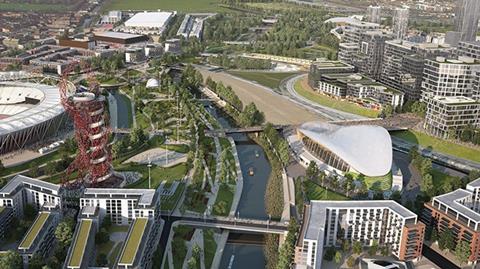
The mayor’s most high-profile commitment to the culture of the capital remains the Orbit sculpture in the Olympic Park. Designed by celebrated artist Anish Kapoor, Europe’s tallest public artwork played no part in initial plans for the site. But it was allegedly crowbarred in when Johnson decreed that the park needed a visual showstopper to enrapture global audiences. The sculpture’s abstract design sparked intense controversy which one imagines appealed to the mayor’s sense of vaudevillian mischief, although he is doubtless less enamoured with its relatively low post-Games visitor numbers.
What could also prove to be Johnson’s defining cultural legacy is another Olympic Park site, Olympicopolis (pictured). The prime waterside development aims to become a world class cultural and educational hub with new outposts for the Victoria & Albert Museum, Sadlers Wells Theatre, the University of the Arts London, University College London and the first branch of the eminent Smithsonian Museum outside the US. If or when completed, Olympicopolis could prove to be one of the most spectacular Olympic legacy conversions of any host city.
However, despite these two showpiece projects, in real terms, London’s status as a global cultural capital has little to do with mayoral involvement and landmark projects that have been progressed during Johnson’s tenure, such as extensions to both Tate galleries, the V&A and the British Museum, plus the new Design Museum and Museum of London are more a result of private grants or central government funding rather than mayoral initiative. A classic example is London’s planned new symphony hall; it was the chancellor who commissioned the feasibility study and not the mayor. The overriding mayoral imperative within this sector would appear to be Do No Harm, a commitment which Johnson largely appears to have observed.
Transport
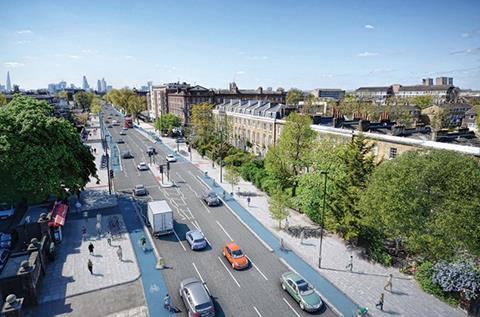
One of Ken Livingstone’s key successes as mayor was the significant improvement he made to London’s public transport network. Chief among these were his introduction of the cycle hire scheme, (unashamedly re-appropriated as “Boris Bikes”), his implementation and extension of the overground network, his securing government backing for Crossrail, his improvement of bus services and his groundbreaking introduction of the congestion charge. Therefore public transport presented Boris with one of his toughest acts to follow.
While Livingstone introduced cycle hiring to London (a scheme itself borrowed from Paris), Johnson, a keen cyclist himself, has presided over a massive expansion in cycling capacity and popularity in the capital. Transport for London has predicted that bikes will soon outnumber cars in the city, an incredible achievement and one unmatched by any other capital in the world. Depending on your point of view, this expansion was either the product or precursor of Johnson’s cycling initiatives, one of which is one of the three defining public transport initiatives of Johnson’s mayoralty: the segregated cycle superhighways (pictured).
Almost £1bn is being spent on improving conditions for cyclists in London with funds primarily focused on a sprawling network of segregated cycle routes being installed across the city, one of which claims to be Europe’s longest. These have caused consternation and resentment among other road users and the roadworks associated with their construction has unleashed traffic chaos across the city. But they are exactly the kind of strategic, visionary undertakings that mayors are there to implement, even in the face of opposition. They also provide a relatively rare example of Johnson displaying consistency, fortitude and will in a specific policy area.
As does his second defining transport venture, the Thomas Heatherwick-designed New Bus for London, successor to the revered Routemaster and welcome replacement for Livingstone’s disastrous flirtation with the much maligned “bendy bus”. Despite concerns over cost, overheating and practicability, the mayor deserves credit for spearheading the confident reassertion of a London design icon and the restoration of a key component of London’s classic street architecture.
His third showpiece transport initiative is arguably the least successful, the Thames cable car. For some, this project neatly sums up the style over substance pretensions of Johnson’s mayoralty and persona. The project is undoubtedly inspiring and ambitious, propelling occupants almost 300ft above the Thames while majestic London vistas unfurl below. But the detail is less impressive. Partially built with public money in direct contradiction to mayoral promises, the service attracts astounding levels of unpopularity with an average peak of just 16 regular users per week in 2012, now down to zero.
Elsewhere Johnson has proved more a safe pair of hands with transport rather than a visionary expansionist. The tube map has remained more or less unchanged during his tenure, although he lobbied hard for the Northern line extension to Battersea and is broadly supportive of the southerly extension of the Bakerloo line by 2030. His commitment to Crossrail 1 and 2 is no more or less than would have been expected of his role. Arguably his greatest transport failure is the continuing lack of river crossings east of Tower Bridge, a woeful situation that renders his 2008 cancellation of advanced plans for the Thames Gateway Bridge at Greenwich and his impassioned support for tokenistic connections such as the Garden Bridge and Thames cable car all the more galling.




























1 Readers' comment